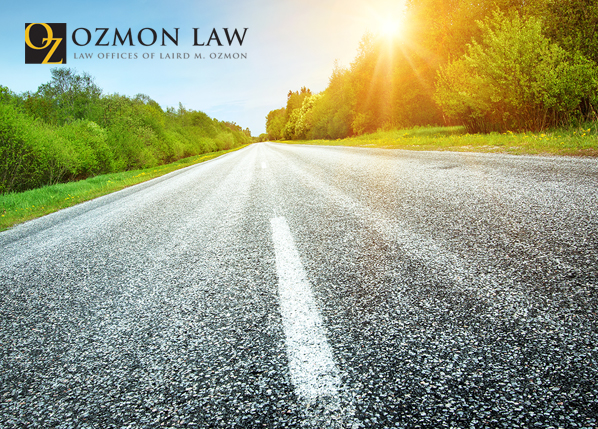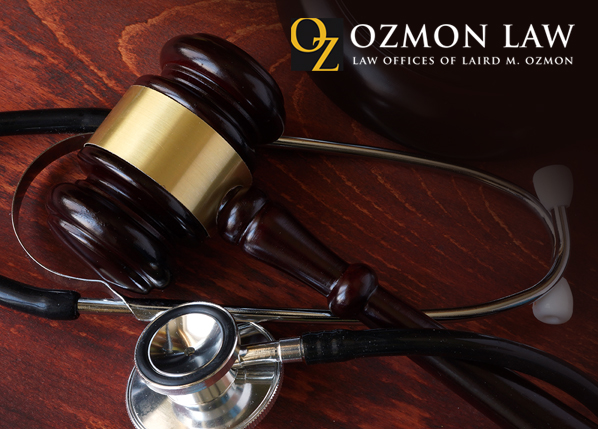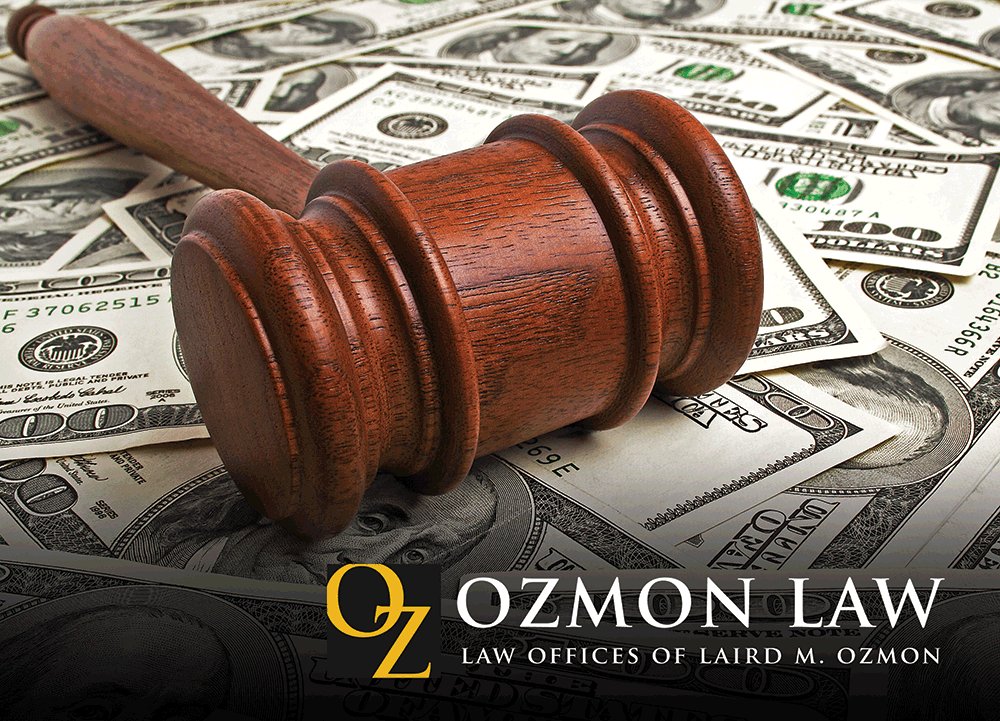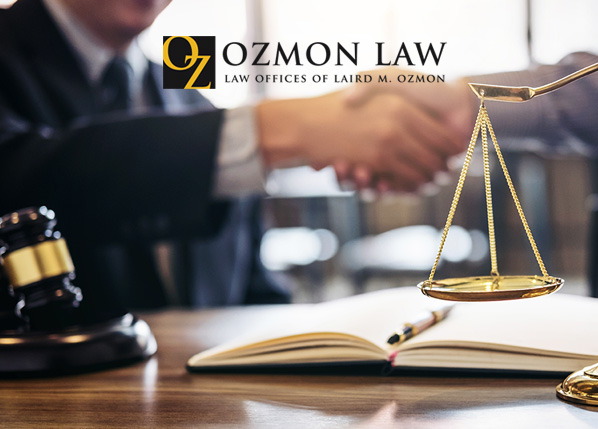Jul 23, 2018 | Law News, Ozmon Law News

It’s a jungle out there. In the spirit of environmental consciousness our highways and byways are filled with bikes and scooters, E-bikes and motorized scooters, mopeds or skateboards, all in a state of frenetic locomotion. In my practice I have found these non-traditional vehicles, motorized or not, generate confusion concerning the rules that apply to them and how Illinois law treats a rider who is injured in accident.
The basic premise for anyone operating a vehicle on an Illinois roadway is they must follow the Rules of the Road—that means you: bikers, motor scooters, skateboarders, etc. So don’t think you can blow a stop sign at a 4-way intersection when a car gets there first. Yes, there is etiquette, for our non-traditional vehicles, a driver’s nod of recognition or a wave of the hand means she cedes the right of way to you. Notwithstanding this, you must always protect yourself by expecting to be treated like any other vehicle on the road even though you don’t have two tons of steel wrapped around you for protection.
All non-traditional vehicles must follow sidewalk rules. The general rule is, if its motorized, it is not allowed on the sidewalk. Think of your mom exiting the door of your local bakery and getting wiped out by a Boosted Board traveling at 20 miles per hour.
State law does not explicitly prohibit bikers from riding on sidewalks. Local ordinances dictate the rules. Some have age limits, others allow it in certain areas and prohibit it in others as dictated by signage. In all cases, when riding on the sidewalk, remember pedestrians have the right of way and the law protects them over riders. Of course, the proliferation of bike lanes has added a new wrinkle and pedestrians (and parked cars) must heed the markings specially dedicated to bikes.
With the invention of new and faster vehicles, i.e. Boosted Boards (motorized skateboard) and One-Wheels (motorized platform with a wheel), the definition of a vehicle and the rules that apply to it are more muddled. For instance, in the City of Chicago it is illegal to ride a skateboard on a roadway or sidewalk in a business district. Chicago Code, 9-80-200. The Illinois Vehicle Code defines a “business district” broadly where there is a roadway with buildings in use for business or industrial purposes within any 600 feet. Although the ordinance is not specific, this likely prohibits use of a motorized skateboard, or similar vehicle, on a street in a city business district. There goes your new ride to work!
Not following the rules that apply to you has consequences in the context of a claim or lawsuit following an accident. If you are considered more than 50% at fault, your recovery is barred. This means even if someone is found to have been 49% negligent when they struck you on your E-bike, you cannot recover any money. If you violate an ordinance or statute that is designed to protect human life or property, like the above skateboard example, that is presumptive evidence of your negligence, and potentially weakens your case. So for everyone’s sake, lose the earbuds, follow the Rules of the Road and sidewalks, protect yourself and watch out for others.

Attorney Laird M. Ozmon
Jun 27, 2018 | Ozmon Law News

Often when people are injured they have difficulty articulating their injuries. It’s usually a case of underreporting (failing to mention the MRI you had) or over reporting (trying to blame every ache and pain on the injury). My decades-long career as a plaintiff’s attorney has afforded me an ability to ask the right questions in order to gather the most relevant information. I then am able to assess all of the potential damages to which a plaintiff may be legally entitled to recover in a lawsuit. This process not only helps clients to know their rights but also to have reasonable expectations as to the amount of money they may expect to recover.
The law is very specific about the damages that are recoverable in a personal injury case. If the case goes to trial, the jury is instructed on the elements of these damages and plaintiff’s attorneys structure their closing arguments to seek an amount for each of these elements of damages which when totaled makes up the jury’s award. Similar arguments are informally made between lawyers attempting to settle a case.
Some damages are much easier to value than others. For instance, it is easy to seek reimbursement for all paid medical expenses related to the injury. This is a fixed amount supported by medical bills. It is more difficult to assess damages for future medical expenses, like a surgery that won’t become necessary for five years, but is nonetheless related to the claim. Here we have to seek the testimony of medical experts to support such a claim.
Likewise, lost wages for a fixed period off work after the incident are calculable, but if the plaintiff cannot return to work, we need to extrapolate a lifetime of loss using life expectancy tables and the future growth of earnings to calculate the future loss. In many instances, an economist is retained as an expert to explain the complex calculations.
Then there are less tangible elements of damages including: pain and suffering, loss of a normal life/disability, disfigurement. Victim’s loved ones may also suffer losses as acknowledged by the law. These are separate causes of action such as loss of consortium or loss of society in a wrongful death case. These damages focus on losses sustained by certain family members as a result of what a plaintiff is no longer able to do, i.e. give love, comfort, support or advice to a spouse, child or parent, and how this affects those loved ones.
The amount of money that may be recovered for each of these elements is highly subjective and determined by a unanimous jury’s verdict. For instance, a juror who suffers from a chronic pain syndrome may attribute a much greater value to pain and suffering than a 22 year-old healthy male who can’t relate. Or, conversely, the juror with the chronic pain syndrome may be reluctant to award money when they never received anything for their problems. These elements of damage are critical to the plaintiffs case and I spend a significant amount of time and energy developing them. This may involve interviewing loved ones, friends, colleagues, co-workers, clergy and/or consulting experts. Significant recoveries by plaintiffs result from well-supported and compelling evidence as to these elements of damages
Making the case for damages is the final and most important chapter in the plaintiffs story. Over my nearly 40 years of trial experience, I have always focused on making that chapter end with my plaintiff’s recovering the maximum fair and just compensation from the jury.

Attorney Laird M. Ozmon
Jun 23, 2018 | Ozmon Law News

When a person recovers money rightfully owed to him or her as a result of a personal injury settlement or award, it’s important to take proper steps to avoid being victimized after the case is over.
In April 2018, a woman was shot and killed during a Zion home invasion in a bold attempt to steal the money she was awarded in a lawsuit settlement.
This scenario is more common, although not often as violent, as you might think.
Laird Ozmon, a dedicated personal injury attorney at Ozmon Law in Joliet, knows his job is not done once a settlement or award has been secured for his client.
Personal injury attorneys need to make sure they ask all of the right questions to ensure clients are getting the best advice to handle the compensation.
A personal injury settlement or award can be viewed by others as the equivalent of winning the lottery. These clients can often face new perils – such as protecting the financial proceeds from their case.
Protecting younger, mentally impaired or potentially spendthrift plaintiffs from themselves and others is often a serious consideration.
A structured settlement can have significant beneficial tax benefits that can be lost if not coordinated with the defendant(s) before any checks are issued.
It gets even more complicated when clients receive a large sum of money and their settlement or award is publicized. This can trigger a potentially life-changing event.
Clients are best advised to maintain their privacy and protect the confidentiality of their settlement or award.
Nothing should ever be posted on any social media platform advertising participation in a lawsuit – especially not conveying any favorable result.
Good trial lawyers always look out for their clients, even when their case has been resolved!
Jun 4, 2018 | Law News, Ozmon Law News

You may have heard about the recent murder of a Zion, Illinois resident in a bold attempt to steal the proceeds of the settlement of a lawsuit. Read the story at Chicago Tribune. This scenario is more common, although not often as violent, as you might think. When a person recovers money rightfully owed to him or her as a result of a personal injury settlement or award, this may be viewed by others in the community as the equivalent of winning the lottery. These clients can often face new perils – such as protecting the financial proceeds from their case.
Dedicated personal injury attorneys know our job is not done once we have secured a settlement or award on behalf of our clients. Each client is different and has varied needs and personal circumstances that we weigh into recommending how to best invest and/or protect their monies. For instance, if a client is a young adult, we might suggest putting some or all of the personal injury proceeds into an annuity or a trust that pays a fixed amount on a regular basis. This allows the recipient to have a steady income over a period of years that earns the maximum amount of interest in a secure investment. Other clients may want to set a particular age for major payouts, i.e. when they need to purchase a home. The overriding concern in either scenario being that a lump sum payment might precipitate irresponsible spending or sharing leaving no money to cover long term disability or healthcare needs. It is often important that such decisions are made before there is any payout. A structured settlement can have significant beneficial tax benefits which can be lost if not coordinated with the defendant(s) before any checks are issued.
It gets even more complicated when clients receive a large sum of money and their settlement or award is publicized. This can trigger a potentially life-changing event. Some clients have reported having to relocate or “lay low” for a lengthy period in order to avoid opportunistic members of their community, friends, relatives, con artists or even criminals. This can present an extremely delicate matter that may require careful planning by a trusted team dedicated to the client’s best interests.
Clients are best advised to maintain their privacy and protect the confidentiality of their settlement or award. Nothing should ever be posted on any social media platform advertising participation in a lawsuit especially not conveying any favorable result. Just as you wouldn’t share your personal financial status (i.e. salary, savings, investment value) personal injury proceeds, even the existence of them, should be treated as extremely private and not to be discussed in polite company.
For our part, personal injury attorneys need to make sure they ask all of the right questions to ensure clients are getting the best advice to handle the compensation they recover so they aren’t victimized a second time. Good trial lawyers always look out for their clients even when their case has been resolved!

Attorney Laird M. Ozmon
May 17, 2018 | Ozmon Law News

If you ride, the first thing should be obvious to you – always pay attention to all traffic around you and I suggest that you assume they all might do something stupid!
The warmer weather means drivers must again be alert to share the road with motorcyclists. The reality is that vehicular drivers with all their attendant blind spots and routine habits to focus only on other vehicles are the usual cause of motorcycle collisions. Motorcycle fatalities have been trending upward over the past 10 years, and riders over the age of 60 are three times more likely to be hospitalized after a crash than younger ones. Unfortunately, victims of motorcycle collisions are often more likely to be seriously injured or killed through minor acts of negligent driving.
Laird Ozmon believes that wrongful conduct deserves rightful compensation. If you or a loved one is injured in a motorcycle accident, contact Ozmon Law for a free consultation. Ozmon Law has represents the seriously or catastrophic injured victims of motorcycle accidents for over 35 years. Mr. Ozmon is a highly accomplished trial lawyer who is uniquely qualified to obtain fair compensation through settlement or if necessary from a jury.
Many motorcycle riders often do not appreciate the gravity of the potential financial consequences serious medical costs can cause for them and their families should they become a victim of negligent driving. Regardless of fault, persons without healthcare coverage must consider obtaining significant medical pay coverage in their motorcycle insurance policies. Remember many people are uninsured or underinsured.
If you are in a serious motorcycle accident, do not post images or discuss your accident or the case on social media. Any posts or images can be used against you in a subsequent lawsuit.
In a serious case, it is not wise to try to negotiate with an insurance company or the negligent party. Ozmon Law has been exclusively dedicated to the representation of seriously injured victims and their families involving personal injury for over 30 years.

Attorney Laird M. Ozmon
Apr 28, 2018 | Ozmon Law News

Expectations drive human behavior. Few people outside of the legal profession have any understanding of the judicial process or the time horizon involved to enable them to form reasonable expectations about it. Instead, the public relies on the fantastical depiction of the legal system represented on television and in movies. Believe me, unlike an episode of The Good Wife, no personal injury case goes from discovery deposition to trial in a day’s time, with private investigators disclosing the key piece of evidence just before closing arguments. The law is made up of rules, after all.
In reality, a party can expect a case to take an average of three to five years to make its way through the legal system, sometimes even longer. Oftentimes, defendants bring multiple motions to dismiss the case so the most crucial part of the process, called “discovery,” does not even get under way for a couple of years.
Discovery is the investigation of the case to adduce the facts that form the evidence admissible at trial that proves the plaintiff’s case to the factfinder, either judge or jury. It can also reveal potential flaws or defenses that allow defendants to defeat a plaintiff’s claim or reduce a defendant’s liability for damages. Discovery is lengthy and painstaking.
During discovery, the plaintiff has a brief moment in the spotlight—a starring role during his or her deposition. This is also incredibly stressful. Since it is the defendant’s attorney conducting the deposition, the plaintiff does not have control of the narrative. It can be very frustrating for an injured party who views it as an opportunity to tell their story. It is my job to take the time necessary to prepare plaintiffs for this and reassure them that we ultimately will control the narrative at trial if necessary.
Then the plaintiff shifts to the background while the rest of the discovery commences, depositions of witnesses for the plaintiff and defendants, experts on both sides, document production. Over a period of years, plaintiff’s attorneys can expend hundreds of hours of diligent work to build the case to their client’s advantage, strategize and get the case in a position, ideally, to get the best settlement. Yes, settlement!
The statistics vary, but well under 10% of civil cases go to trial, more than 90% settle before trial. Settlement is the goal because it means more money in the plaintiff’s pocket (remember the plaintiff is responsible for the hefty expenses involved in the trial, i.e. expert fees, court reporting costs, demonstrative exhibits) and it provides certainty of recovery. While trials are the penultimate moment in the story arc on TV, in real life, they can end in a verdict for the defendant—a reality a good plaintiff’s lawyer must make clear to a plaintiff whose case has potential problems. The prudent plaintiff’s attorney is always preparing and is well-prepared for trial, but avidly pursuing settlement knowing in the real world of juries and courtrooms both are often a crapshoot. The savvy, experienced trial lawyer’s job is to artfully prepare his or her client’s case such that the defendants come to realize a fair and reasonable is in THEIR BEST INTERESTS. If the defendant disagrees, then it’s time to talk to those 12 people in the jury box.

Attorney Laird M. Ozmon







